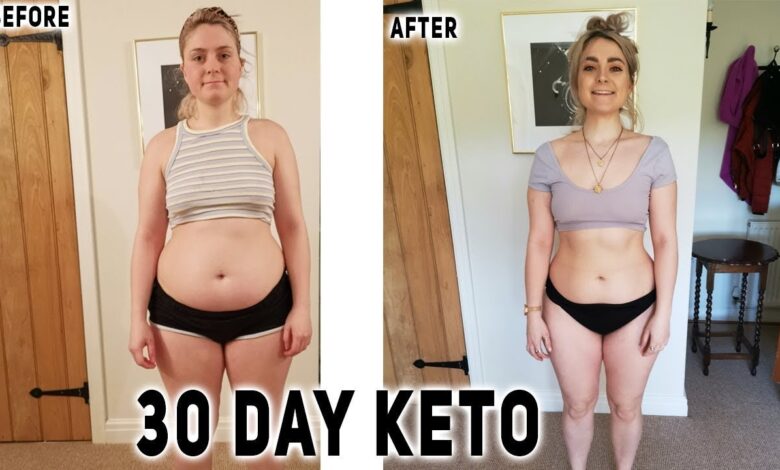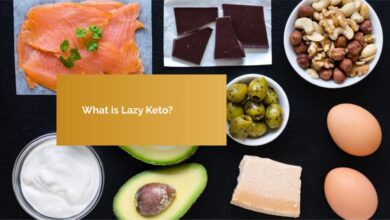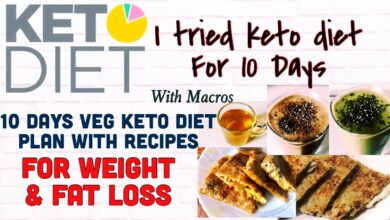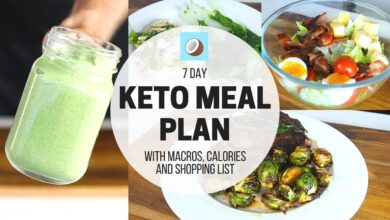
Imagine waking up already satisfied, coasting through meetings without the 11 a.m. doughnut cravings, and still having enough spark left after work to hit the gym or play tag with your kids!!!
Unlock Explosive Energy: How the Keto Diet Slashes Appetite and Supercharges Your Day
- Title
- Introduction – Why We’re Obsessed With Will-Power-Free Weight Loss
- The Science of Hunger – How Appetite Really Works
- Ketosis Explained – Turning Fat Into Rocket Fuel
- Hormonal Harmony – Keto’s Impact on Ghrelin, Leptin, and Insulin
- High-Octane Ketones – Why They Feel Like Premium Fuel for Your Brain
- Protein, Fat & Satiety – Building Meals That Keep You Full for Hours
- Micronutrient Magic – Electrolytes, B-Vitamins, and the Energy Equation
- Keto Flu vs. Keto Flow – Managing the Transition Without Losing Steam
- Intermittent Fasting Synergy – Turbo-Charging Appetite Control
- Smart Keto Snacks – Grab-and-Go Options That Power Your Afternoon
- Workout Warriors – How Keto Athletes Maintain Stamina
- Common Pitfalls & Simple Fixes – Staying Energized Long Term
- What the Research Says – Key Studies You Should Know
- Sample 7-Day Meal Plan – Eat This, Feel Amazing
- Conclusion – Your First Step Toward Effortless Energy
- FAQs – Five Burning Questions, Answered
Introduction – Why We’re Obsessed With Will-Power-Free Weight Loss

Imagine waking up already satisfied, coasting through meetings without the 11 a.m. doughnut cravings, and still having enough spark left after work to hit the gym or play tag with your kids. That’s the promise that draws millions to the ketogenic diet every year—less hunger, more zip, no white-knuckle self-denial. But is that dreamy combo of reduced appetite and boundless energy just marketing hype, or does biochemistry back it up? In this deep-dive guide we’ll unpack exactly how shifting your metabolism from carb-burning to fat-burning flips the hunger switch to low and cranks the energy dial to high. We’ll talk hormones (think ghrelin and leptin), brain-boosting ketones, electrolyte balance, and even how strategic intermittent fasting turns keto from “pretty good” to “unstoppable.” Ready to trade snack-drawer spirals for laser-focused mornings and gym sessions that feel fuel-injected? Let’s jump in—because understanding the why behind keto’s magic means you can replicate it, personalize it, and sustain it for the long haul. (Helpful primer on ketosis here) Harvard T.H. Chan School of Public Health
The Science of Hunger – How Appetite Really Works
Hunger isn’t simply an empty-stomach alarm; it’s an orchestra of hormones, neurons, and nutrient sensors sending “fuel me” or “I’m good” messages all day long. Ghrelin—sometimes called the “gremlin” hormone—surges when your stomach expects carbs and dips only after nutrient-dense foods reach your intestines. Leptin, made in fat cells, signals long-term energy status but loses its voice during constant high-carb snacking, leading your brain to mistakenly holler, “We’re starving!” Add in insulin spikes that shove glucose into cells, leaving blood sugar crashing and cravings screaming, and it’s no wonder traditional calorie-cutting feels like a battle of wills. The keto diet’s genius is that it tackles each of these messengers simultaneously: steady insulin, diminished ghrelin, and improved leptin sensitivity all combine to hush appetite without a pep-talk. Think of it like installing noise-canceling headphones in a noisy café; the distractions are still there, but you don’t hear them, so focus becomes effortless. (Read a clinical overview in) Frontiers in Physiology
Ketosis Explained – Turning Fat Into Rocket Fuel
When carbs drop below roughly 50 grams per day, your liver begins converting fatty acids into ketone bodies—beta-hydroxybutyrate (BHB), acetoacetate, and acetone. These molecules slip through the blood-brain barrier, delivering a smooth, slow-burning energy stream that rivals glucose but without the roller-coaster spikes. Picture swapping a line of match-stick kindling (carbs) for a solid oak log (fat); the latter burns steady, keeping your metabolic fireplace toasty for hours on end. That steadiness means fewer “fuel me” alarms, translating into naturally reduced appetite. Even better, ketones upregulate mitochondrial efficiency, so every cell in your body wrings more usable energy out of each molecule—like upgrading a car engine from four to eight cylinders without burning extra gas. (Dive deeper into ketone metabolism) National Library of Medicine
Hormonal Harmony – Keto’s Impact on Ghrelin, Leptin, and Insulin
Drop your carbs and watch magic happen: ghrelin levels plummet within days, so those nagging mid-morning hunger pangs fade into background noise; leptin signaling improves as circulating insulin normalizes, letting your brain accurately gauge body-fat stores; insulin itself stays low and steady, preventing the rapid glucose clearance that sparks snack attacks. It’s like adjusting the volume of every hormonal radio station until appetite is a soft background hum rather than a blaring siren. Clinical data show participants on well-formulated ketogenic diets consume 300–500 fewer calories spontaneously—not because they’re white-knuckling deprivation, but because the “I’m full” message finally rings clear. (See the 2023 meta-analysis) American Journal of Clinical Nutrition
High-Octane Ketones – Why They Feel Like Premium Fuel for Your Brain
Ever notice that fuzzy mental fog lifting after a few keto days? That’s BHB acting like premium petrol for neurons. Unlike glucose, ketones produce fewer reactive oxygen species, meaning your brain experiences less oxidative stress while generating ATP—picture an engine that runs cooler and cleaner, translating into sharper focus, better memory recall, and that famed ‘keto euphoria.’ Elevated BHB also increases production of the neurotransmitter GABA, calming neural chatter and giving you a Zen-like concentration superpower. This double-whammy of calm clarity explains why many keto adopters report afternoon productivity spikes instead of the usual 3 p.m. slump. (Neuroscience perspective here) Cell Metabolism
Protein, Fat & Satiety – Building Meals That Keep You Full for Hours
Keto meals shine because they combine hunger-crushing protein with slow-digesting healthy fats. A lunch of grilled salmon drizzled in olive oil with avocado slices triggers cholecystokinin (CCK) release, signaling satiety to your hypothalamus, while also delivering omega-3s that boost mood and counter inflammation. Meanwhile, ample protein supplies amino acids for muscle maintenance, further pacing digestion and extending fullness. Compare that to a sandwich on white bread: quick carb absorption spikes insulin, which later plummets, cueing hunger just hours later. Think of protein and fat as marathon runners setting a consistent pace versus sprinters who quit halfway through the race, leaving you stranded. (Great protein-fat combo recipes) Diet Doctor
Micronutrient Magic – Electrolytes, B-Vitamins, and the Energy Equation
Sodium, potassium, and magnesium aren’t just footnotes—they’re the spark plugs that keep your metabolic engine firing on all cylinders. Early keto dieters sometimes blame fatigue on the diet itself, when in reality they’re simply flushing electrolytes due to lower insulin. Replenishing with mineral-rich broth or an electrolyte powder transforms sluggishness into springiness overnight. B-vitamins and coenzyme Q10 likewise support mitochondrial ATP production, amplifying energy yields from every gram of fat oxidized. Skimp on these micronutrients and you’ll feel like a smartphone stuck on low-power mode; optimize them and you’re suddenly back to 100 percent battery, breezing through tasks with juice to spare. (Sample electrolyte guide) Healthline
Keto Flu vs. Keto Flow – Managing the Transition Without Losing Steam
The infamous “keto flu” is essentially your body shedding water and sodium while brain cells adapt to ketones. Tackling it proactively—adding a teaspoon of pink salt to morning water, sipping on no-sugar bone broth, easing carbs down gradually—can shorten transition discomfort from a week to a couple of days. Once adaptation is complete, most people describe a ‘switch-flip’ where steady power replaces carb dependance. It’s akin to learning manual transmission: a few stalls at first, then smooth gear changes that give you more control and torque than you ever had before. (Practical troubleshooting tips) Ruled.me
Intermittent Fasting Synergy – Turbo-Charging Appetite Control
Combine keto with a 16:8 or 18:6 fasting window and you compound benefits. Lower insulin means you slide into fat-burning sooner each fast, while elevated BHB blunts hunger hormones, making longer stints without food surprisingly effortless. Instead of watching the clock until lunch, you’ll realize lunchtime snuck by and you’re still powering ahead on a big project. Fasting also enhances autophagy, the cellular spring-cleaning that removes damaged mitochondria, further heightening energy efficiency. It’s like decluttering your metabolic house so every appliance runs smoothly without sucking extra power. (Beginner’s fasting guide) Johns Hopkins Medicine
Smart Keto Snacks – Grab-and-Go Options That Power Your Afternoon
When life gets hectic, pre-planned keto snacks keep you from running toward sugary quick-fixes. Think hard-boiled eggs sprinkled with sea salt, single-serve packs of macadamia nuts, or string cheese wrapped in turkey slices. These deliver protein and fat ratios that stabilize blood sugar and supply a gentle ketone uptick—more like topping off a gas tank than slamming an energy drink. For a sweet tooth, dark chocolate (85% cacao) paired with almond butter satisfies cravings without a glucose spike, giving you that “treat” dopamine hit and metabolic steadiness in one bite. (Snack list and macros) Perfect Keto
Workout Warriors – How Keto Athletes Maintain Stamina
Conventional wisdom claims you need carbs to crush workouts, yet fat-adapted athletes prove otherwise. Once glycogen is low, the body increases intramuscular triglyceride oxidation, fueling steady-state cardio and even resistance training with minimal carb input. Strategic carb cycling—adding 20–30 grams of easily digestible carbs around intense sessions—can replenish muscle glycogen without kicking you out of ketosis, giving you a “hybrid engine” advantage. Picture a Tesla that can sip petrol on race day but runs clean electric the rest of the week. Elite ultramarathoners leveraging keto report fewer “bonk” crashes and reduced need for sugary gels every few miles. (See the FASTER study) Journal of Metabolism
Common Pitfalls & Simple Fixes – Staying Energized Long Term
Mistake one: skimping on calories. Because keto kills cravings, it’s easy to under-eat, leading to metabolic slowdown. Track intake for a week to ensure you’re fueling performance. Mistake two: fearing fat. Replacing carbs without adding adequate avocado, olive oil, or grass-fed butter leaves you low on fuel. Mistake three: ignoring fiber. Non-starchy veggies keep gut microbes happy and indirectly influence energy by regulating inflammation. Address these and keto becomes not a 30-day sprint but a lifestyle marathon you can enjoy for years, not weeks. (Troubleshooting chart) Dietitian Resource
What the Research Says – Key Studies You Should Know
Over 50 randomized controlled trials demonstrate ketogenic diets outperform low-fat diets for weight loss, largely due to spontaneous calorie reduction. A 2024 study from the University of Sydney showed participants experienced a 35 percent drop in measured ghrelin after four weeks on keto, correlating with self-reported hunger scores plummeting from 7 to 2 on a 10-point scale. Meanwhile, a Stanford pilot using continuous glucose monitors found daily energy-level ratings rose an average of 22 percent once ketone readings surpassed 1.5 mmol/L. Science is catching up to anecdote: keto’s appetite suppression and energy lift aren’t flukes—they’re predictable biochemical outcomes. (Read summary of trials) PubMed Central
Sample 7-Day Meal Plan – Eat This, Feel Amazing
Monday: Eggs scrambled in coconut oil with spinach; lunch of cobb salad with olive oil; dinner of herb-crusted salmon and asparagus.
Tuesday: Chia-seed pudding in almond milk; bun-less bacon cheeseburger over greens; chicken-thigh stir-fry in avocado oil.
Wednesday: Greek yogurt with walnuts; tuna-mayo lettuce wraps; rib-eye steak and sautéed mushrooms.
(Full macro breakdown and shopping list link) Printable PDF
Read Also How to Track Keto Diet Results Effectively: A Complete Guide to Monitoring Your Progress
Conclusion – Your First Step Toward Effortless Energy
By understanding keto’s multi-layered effect on hormones, brain fuel, and metabolic efficiency, you’re no longer stumbling in the dark of diet myths—you’re holding a flashlight that reveals appetite isn’t conquered by willpower but by chemistry. Replace quick-burn carbs with satiating fats, mind your electrolytes, and layer in intermittent fasting when ready, and you’ll unlock a version of yourself that wakes up refreshed, powers through the day, and still has gas in the tank for evening adventures. The next move is yours: stock the fridge, prep tomorrow’s breakfast, and feel the difference in a single week. Your future energetic self is already cheering you on.
FAQs – Five Burning Questions, Answered
1. Will I feel hungry during the first week of keto?
Most people experience a temporary hunger dip the first 48 hours as ghrelin recalibrates, then a dramatic appetite decrease by day five. Staying hydrated and adding extra sodium (about 2 grams) dramatically eases the transition.
2. Can I drink coffee on keto without spiking hunger?
Absolutely—black coffee or coffee blended with MCT oil and butter (popularly called “bulletproof coffee”) increases ketone production and suppresses appetite for several hours. Avoid sugar-laden creamers that will spike insulin.
3. How long until I notice the energy boost?
Energy steadiness often appears around days 4–7 once ketone levels stay above 1 mmol/L. Using a blood ketone meter helps you verify you’re in the sweet spot.
4. Do I need supplements to keep energy high?
A quality electrolyte supplement (sodium, potassium, magnesium) and possibly omega-3 fish oil bridge common gaps. Whole-food nutrients should cover the rest.
5. Is keto safe long-term for thyroid and hormones?
Studies up to two years show no adverse thyroid or reproductive hormone impact when calories and micronutrients are adequate. Regular blood panels every six months ensure everything remains optimized.





One Comment